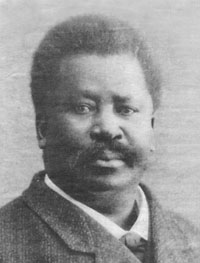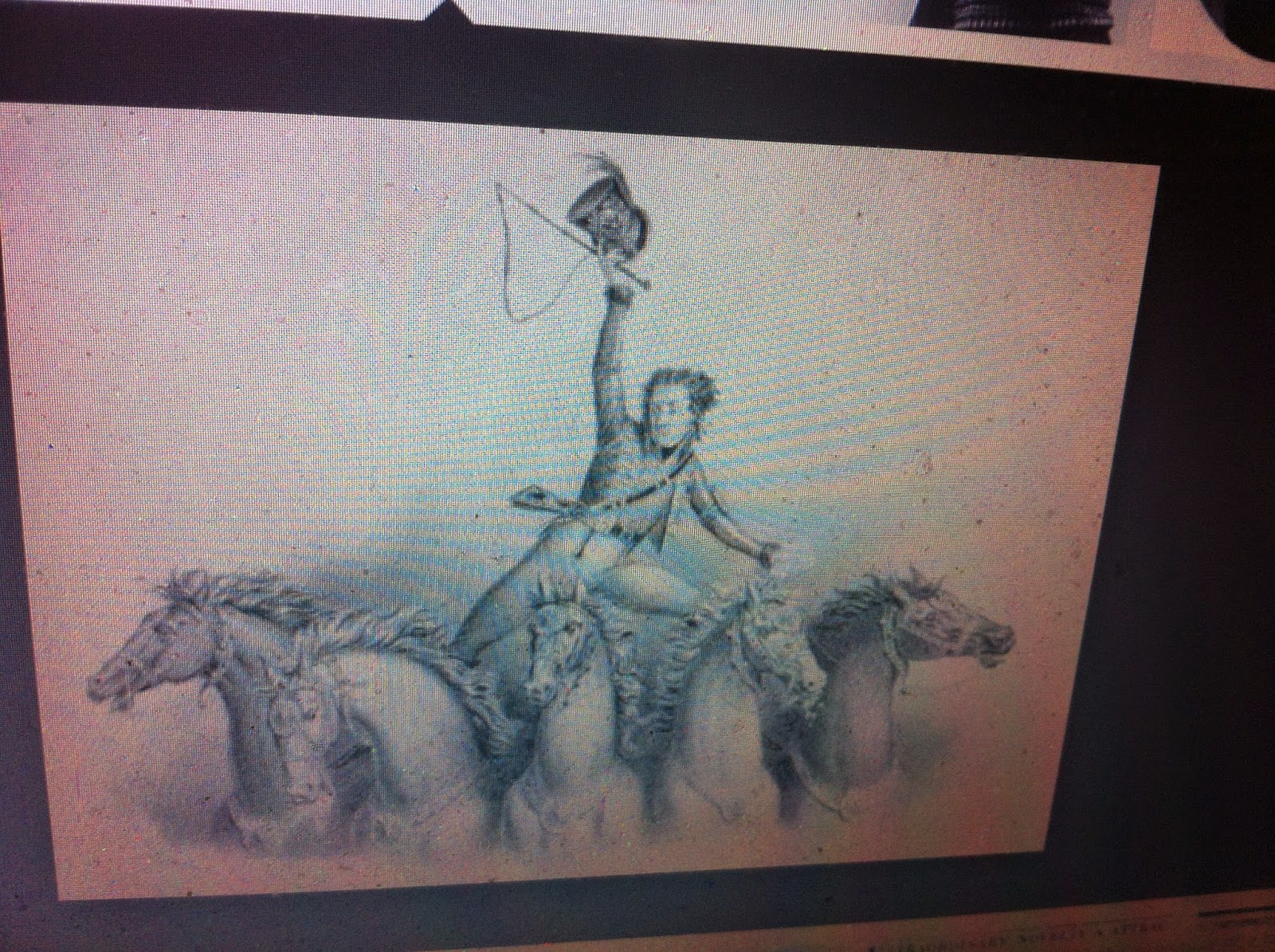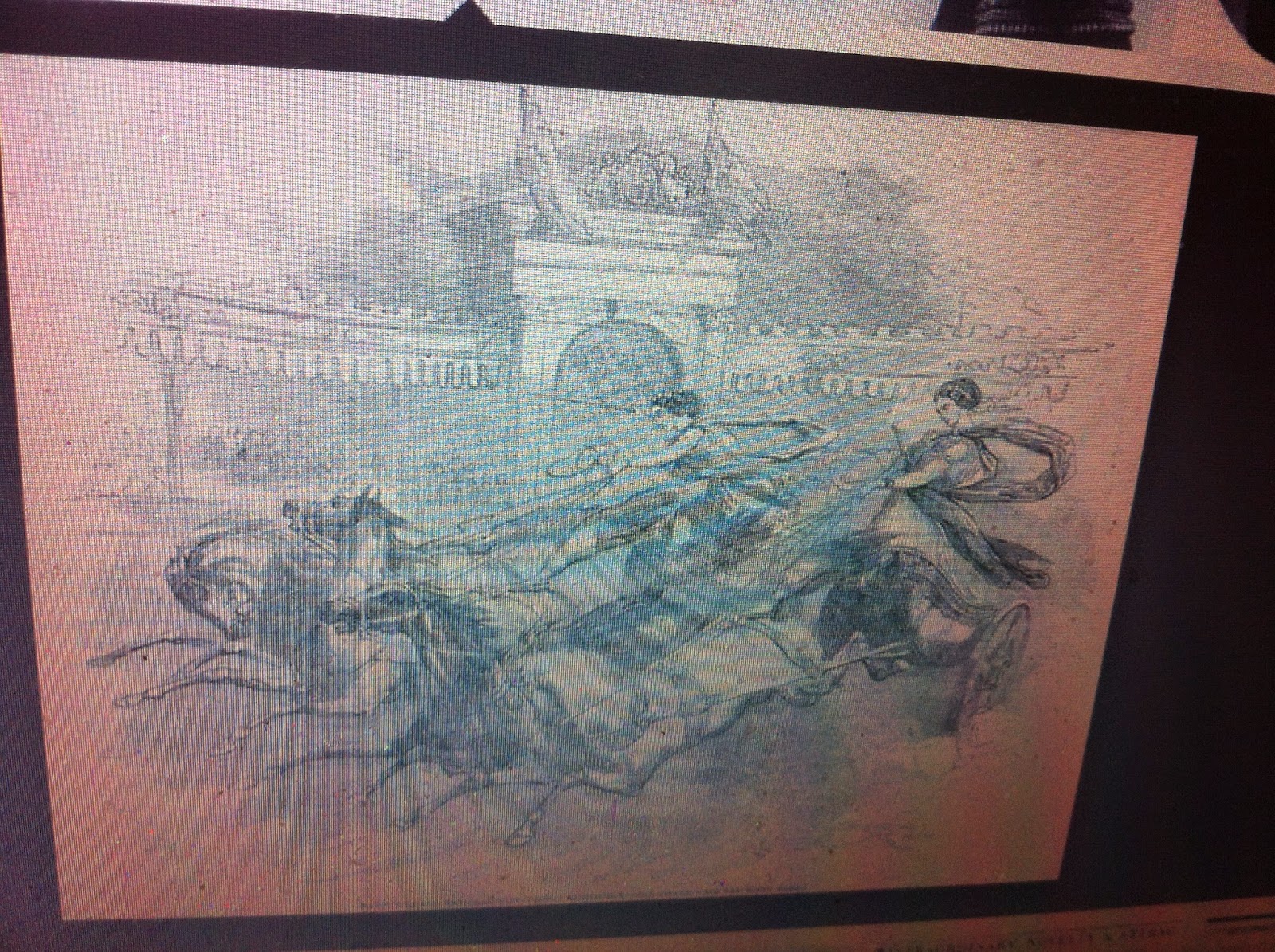BLACK SOCIAL HISTORY Pablo Fanque
| Pablo Fanque | |
|---|---|
 | |
| Born | William Darby 28 February 1796 |
| Died | 4 May 1871 (aged 75) |
| Nationality | UK |
| Ethnicity | mixed race |
| Occupation | Circus proprietor; equestrian performer |
Pablo Fanque (born William Darby 28 February 1796 in Norwich,[1] England; died 4 May 1871 in Stockport, England) was the first non-white Briton circus proprietor in Britain. His circus, in which he himself was a performer, was the most popular circus in Victorian Britain for 30 years,[2][3][4] a period that is regarded as the golden age of the circus.[5]
Today, Pablo Fanque is best known from his mention in The Beatles song "Being for the Benefit of Mr. Kite!" on the album Sgt. Pepper's Lonely Hearts Club Band.
Early life
Little is known about Pablo Fanque's early life. Church records suggest that he was one of at least five children born to John and Mary Darby (née Stamp) of Norwich.[4] They were believed to have resided in Ber Street.[6] Fanque reportedly declared his late father's occupation as "butler" on his marriage certificate in 1848.[4] John M. Turner, Fanque's biographer, speculates that "his father was African-born and had been brought to the port of Norwich and trained as a house servant."[7] Fanque was reportedly orphaned at a young age.[8] Another account has Fanque born in a workhouse to a family of seven children.[9]
There is a question regarding the year of Fanque's birth. While Turner has popularized the belief that he was born in 1796,[1] a birth register for St. Andrews Workhouse inNorwich reports the birth of a William Darby to John Darby and Mary Stamp at the workhouse on 1 April 1810.[10] A blue plaque commemorating Fanque's birth installed by the city of Norwich near the purported location of his childhood residence also records his birth as 1810.[11][12] Still, at the time of his death, the newspaper Era records that his coffin bore the inscription "AGED 75 YEARS" and Fanque's tombstone records the same age. Another contemporaneous newspaper states that it researched the question of his age at death and concluded he was 75.[13] Still, throughout his life, Fanque often reported himself to be younger, and of an age more consistent with an 1810 birth.
Career
Fanque apprenticed to circus proprietor William Batty and made his first known appearance in a sawdust ring in Norwich on December 26, 1821, as "Young Darby." His acts then included equestrian stunts and rope walking.[4] Thomas Frost, in "Circus Life and Circus Celebrities," wrote, "We find Batty in 1836 at Nottingham, with a company which included Pablo Fanque, a negro rope-dancer, whose real name was William Darby ..."[14] Once established, William Darby changed his name to Pablo Fanque.[4] It appears that Fanque or his contemporaries often considered "Pablo" to be his surname.
Fanque made a highly successful London debut in 1847. Describing Fanque and his performance, The Illustrated London News wrote:
The Illustrated London News reporting on perhaps an earlier performance during Fanque's 1847 run at London's Astley's Amphitheatre, fills in many biographical details regarding Fanque:
This same edition of The Illustrated London News provides an example of how contemporaries regarded his performance: "This extraordinary feat of the manege has proved very attractive, as we anticipated in our Journal of last week; and we have judged the success worthy of graphic commemoration. As we have already described, the steed dances to the air, and the band has not to accommodate itself to the action of the horse, as in previous performances of this kind. The grace and facility in shifting time and paces with change of the air, is truly surprising." Fanque is described as a "skilful rider" and "a very good equestrian." Sounding almost as grand as the boasts of Fanque's ownbroadside posters, the paper said, "Mr. Pablo has trained [his black mare] to do the most extraordinary feats of the manege, an art hitherto considered to belong only to the French and German professors of equitation, and her style certainly far exceeds anything that has ever yet been brought from the Continent."
An illustration closely resembling the one appearing in the 20 March 1847 edition of The Illustrated London News appears on an 1850s poster advertising Fanque's appearance in Leeds, with the headline, "M. Pablo Fanque, as he performed, by royal command, at Astley's Amphitheatre, before her Most Gracious Majesty the Queen."[16]
While Turner cites Fanque's 1847 performance at Astley's as his London debut, the historical record documents an 1834 performance at The Lawns in Croydon, a borough of metropolitan London. A history of The Lawns records an advertisement that read, "16th September 1834 – A Grand Scottish Fete with a tightrope performance by Pablo Fanque, gymnastics, a leopardess with dogs, military bands, illuminations and fireworks."[17]
In the 30 years that he operated his own circus (sometimes in partnership with others), Fanque toured England, Scotland, and Ireland, although he performed mostly in the Midlands and the Northern England counties of Yorkshire, Lancashire, and what is now Greater Manchester. Among the many cities he visited were Birmingham, Bolton, Bradford, Bristol, Cambridge, Chester, Chesterfield, Hull, Leeds, Liverpool, London, Manchester, Norwich, Oldham, Preston, Rochdale, Rotherdam, Sheffield, Shrewsbury,Wakefield, Wigan, Wolverhampton, and Worcester. In Scotland, his circus visited Glasgow, Edinburgh, and Paisley. In Edinburgh, in 1853, there was a Pablo Fanque's Amphitheatre on Nicolson Street at the current site of Edinburgh Festival Theatre. In Ireland, Fanque's circus performed at Dublin, Belfast, Cork, Galway, Ballinasloe, Carlow, Kilkenny, Waterford, and Clonmel, among other places. In Cork, in 1850, Fanque built an amphitheatre on the site of the former Theatre Royal where the current General Post Office stands (built in 1877).[18][19] His circus also performed at the Donnybrook Fair in 1850, just five years before the discontinuation of the centuries' old fair.[20]
"Fanque's children joined his circus. One of his sons performed under the name Ted Pablo ...[7] They performed with the most popular acts of the business, including Young Hernandez (1832–1861), the great American rider, and the clown Henry Brown (1814–1902)."[8]
In 1869, the front cover of Illustrated London News reported on a near-tragedy at a performance of Pablo Fanque's Circus in Bolton. A tightrope walker, Madame Caroline, stumbled on the rope, and then hung suspended 60 feet in the air by her hands. The rope was lowered a few feet and then, at the exhortation of men who had amassed below, Madame Caroline fell safely into the hands of the crowd.[22]
While some contemporary reports make no mention of Fanque's African ancestry, some reports refer to Fanque as "a man of colour," or "a coloured gentleman," or "an artiste of colour." In 1905, many years after Fanque's death, the chaplain of the Showmen's Guild, in commenting on Fanque's success despite being black in Victorian England wrote, "In the great brotherhood of the equestrian world there is no colour-line."[7]
Beatles fame
Pablo Fanque achieved fame again in the twentieth century, when John Lennon, in composing The Beatles' "Being for the Benefit of Mr. Kite!" borrowed liberally from an 1843 playbill for Pablo Fanque's Circus Royal.[23] Lennon bought the poster from an antique shop inSevenoaks, Kent, while shooting a promotional film for the song, "Strawberry Fields Forever", in Knole Park. Tony Bramwell, a former Apple employee, recalled, "There was an antique shop close to the hotel we were using in Sevenoaks. John and I wandered in and John spotted this Victorian circus poster and bought it."[24] The poster advertises a performance in Rochdale and announces the appearance of "Mr. J. Henderson, the celebrated somerset thrower" and "Mr. Kite" who is described as "late of Wells's Circus." Lennon modifies the language, singing instead, "The Hendersons will all be there/Late of Pablo Fanque's Fair/What a scene!"
The title "Being for the Benefit of Mr. Kite!" is taken literally from the poster. The Mr. Kite referenced in the poster was William Kite, who is believed to have performed in Fanque's circus from 1843 to 1845.[24]
The full text of the original poster is:
"Mr. J. Henderson" was John Henderson, a wire-walker, equestrian, trampoline artist, and clown. While the poster made no mention of "Hendersons" plural, as Lennon sings, John Henderson did perform with his wife Agnes, the daughter of circus owner Henry Hengler. The Hendersons performed throughout Europe and Russia during the 1840s and 1850s.[4]
Being for the beneficence of Mr. Fanque
The "Benefit for Mr. Kite" that was the subject of The Beatles song was just one of many benefits that Pablo Fanque held for performers in his circus, for others in the profession, and for community organizations. Fanque was a member of the Order of Ancient Shepherds, a fraternal organization affiliated with the Freemasons, which assisted families in times of illness or death with burial costs and other expenses. For example, an 1845 show in Blackburn benefitted the Blackburn Mechanics Institution and the Independent Order of Odd-fellows, offering a bonus to the Widows and Orphans Fund. He held a similar benefit in Bury the following year. Turner writing in 2003, could find nothing in the historical record regarding Fanque's circus activities in 1857 and 1858, Fanque was active during those years, holding at least two benefits among other performances. In 1857, inBradford, he held a benefit for the family of the late Tom Barry, a clown. Brenda Assael, in The Circus and Victorian Society, writes that in March 1857, "Pablo Fanque extended the hand of friendship to Barry's widow and held a benefit in her husband's name at his Allied Circus in Bradford. Using the Era offices to transmit the money he earned from this event, Fanque enclosed 10 pounds worth of 'post office orders...being the profits of the benefit. I should have been better pleased had it been more, but this was the close of a very dull season.'" In 24 October 1858, The Herald of Scotland reported: "IN GLASGOW, 'Pablo Fanque's Cirrque Nationale' offered 'A Masonic Benefit.'"
At a time when Britain had just abolished slavery and while it was still thriving in the United States, Britons embraced Fanque publicly and privately. The minutes of Edinburgh's Celtic Lodge No. 291 read, "28th February 1853. Deputation to Brother Pablo Fanque’s Amphitheatre. [A] few of the brethren met this evening in accordance with the resolution of the committee meeting of 23rd inst and accompanied the Right Worshipful Master to Brother Pablo’s Fanque’s Amphitheatre to patronage Luin on this occasion of his benefit[.] [T]he Celtic brethren met with several Sister Lodges and had much pleasure to attend."
In 1843, when clergy in Burnley were criticized in the Blackburn Mercury for attending performances of Fanque's circus, a reader responded:
An 1846 Bolton newspaper story epitomized the public's high regard for Fanque in the communities he visited on account of his beneficence:
Partnership with W. F. Wallett
The clown W. F. Wallett performed in Fanque's circus during the 1840s and 1850s, was a close friend, and even managed Fanque's circus for a time. Wallett frequently promoted himself as "the Queen's Jester," having performed once before Queen Victoria in 1844 at Windsor Castle. He was with Fanque's circus in Leeds, Wakefield, Oxford, and Glasgow. It was a benefit night for Wallett in Leeds when the amphitheatre collapsed killing Fanque's wife. Wallett's wife was sitting with her but escaped serious injury. Throughout his 1870 autobiography, Wallett shares several amusing anecdotes about his work and friendship with Fanque, including the following about their 1859 engagement in Glasgow:
Marriages and family
Fanque married Susannah Marlaw, the daughter of a Birmingham buttonmaker. They had two sons, one of whom was named Lionel. On 18 March 1848, his wife died when a wooden viewers' gallery at the circus in which Fanque's son was performing collapsed. That night, their son was performing a tightrope act before a large crowd at the Amphitheatre at King Charles Croft, in the Headrow in Leeds. The 600 people seated in the gallery fell with its collapse, but Susannah Darby was the only fatality. Heavy planks hit her on the back of the head. Reportedly, Fanque sought medical attention for his wife at the King Charles Hotel, but a surgeon pronounced her dead.[4]
A 4 March 1854 edition of the Leeds Intelligencer recalled the incident, while announcing the return of Pablo Fanque's Circus to Leeds: "His last visit, preceding the present one, was unfortunately attended by a very melancholy accident. On that occasion he occupied a circus in King Charles's Croft and part of the building gave way during the time it was occupied by a crowded audience. Several persons were more or less injured by the fall of the timbers composing the part that proved too weak, and Mrs Darby, the wife of the proprietor, was killed. This event, which occurred on Saturday the 18th March 1848, excited much sympathy throughout the borough. A neat monument with an impressive inscription is placed above the grave of Mrs Darby, in the Woodhouse Lane Cemetery."[26]
In June 1848, Fanque married Elizabeth Corker, a circus rider and daughter of George Corker of Bradford. Corker was 22 years old. With Corker, Fanque had two more sons, George (1854–1881) and Edward Charles "Ted" (1855–1937). Both joined the circus.[4][27] Ted, known as Ted Pablo, also achieved acclaim as a boxer. A daughter, Caroline Susannah, died aged 1 year and 4 months and is buried in the same plot as Susannah and William, as recorded on the gravestone.
The 1861 census records Fanque as living with a woman named Sarah, 25, who is described as his wife, although in 1871, just before he died census records show him living again with his wife Elizabeth and his two sons, in Stockport.
Death
Pablo Fanque died of bronchitis at the Britannia Inn at 22 Churchgate in Stockport, England on 4 May 1871.[4][27] In the funeral procession to Woodhouse Lane Cemetery, Leeds, a band marched ahead of Fanque's hearse playing the "Dead March". Fanque's favourite horse followed, along with four coaches and mourners.[8][28] Fanque is buried next to his first wife Susannah Darby. Woodhouse Lane Cemeteryis now St. George's Field and part of the University of Leeds campus. While the remains of many of the 100,000 graves and monuments have been relocated, the monument that Fanque erected in his wife's memory, and a smaller modest monument in his memory still stand. Susannah Darby's monument reads:
- SACRED
- TO THE MEMORY OF
- SUSANNAH DARBY
- AGED 47 YEARS
- THE BELOVED WIFE OF
- WILLIAM DARBY, EQUESTRIAN MANAGER
- PROFESSIONALLY KNOWN AS
- PABLO FANQUE
- HER DEATH WAS OCCASIONED BY THE FALLING
- OF A PART OF THE CIRCUS ERECTED IN
- KING CHARLES' CROFT
- LEEDS
- ON SATURDAY THE 18TH DAY OF MAY 1848
- HER BEREAVED AND AFFLICTED HUSBAND
- HAS CAUSED THIS MONUMENT TO BE ERECTED
- ALSO CAROLINE SUSANNAH, THE INFANT DAUGHTER OF WILLIAM
- AND ELIZABETH DARBY WHO DIED JANUARY 1ST 1859
- AGED 1 YEAR AND 4 MONTHS
- Of such is the kingdom of Heaven.
Fanque's monument reads:
On 8 October 2010, as part of Light Night ceremony, The Leeds University Union unveiled a blue plaque commemorating Pablo Fanque's final resting place.[31]
Legacy
Thirty years after his death, the chaplain of the Showmen's Guild of Great Britain, Reverend Thomas Horne, wrote: "In the great brotherhood of the equestrian world there is no colour line [bar], for, although Pablo Fanque was of African extraction, he speedily made his way to the top of his profession. The camaraderie of the ring has but one test - ability."
A drawing of Pablo Fanque upon his horse from the 20 March 1847 issue of The Illustrated London News (captioned, ASTLEY'S:--MR. PABLO FANQUE, AND HIS TRAINED STEED) appears on the cover of the 2003 book Black Victorians, Black Victoriana, edited by Gretchen Holbrook Gerzina.[32]
In 2008, a gallery named Pablo Fanque opened in Sydney, New South Wales, Australia, showcasing limited-edition wearable and small-scale artworks and contemporary collectible jewelry and objects from across Australia and overseas.

























































































No comments:
Post a Comment